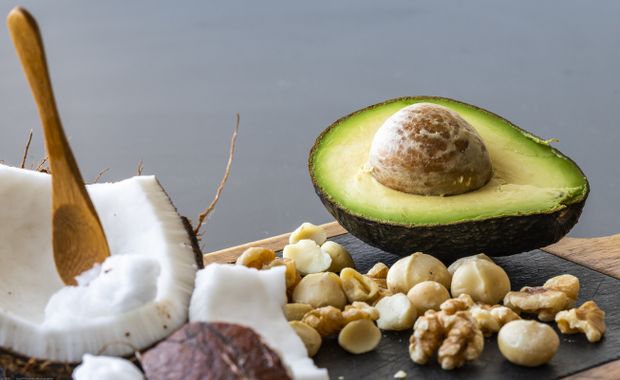Heart disease remains as the leading cause of death in the US and kills nearly 380,000 people a year. While this mortality rate has fallen dramatically over the last 10 years, risk factors are still alarmingly high. Prevention is an essential element in the fight against heart disease — much of which can be managed through diet.
You always hear about “a heart-healthy diet” — but what does that mean? Having a heart-healthy diet includes foods that eliminate risk factors for heart disease, and help maintain healthy levels of cholesterol and fatty molecules called lipids.
This begins by paying close attention to what you eat. Eating heart-healthy foods decreases the chance of developing atherosclerosis, the blocking of arteries that causes heart disease. And if this process has already begun, a heart-healthy diet can slow the rate at which it is progressing. This is even more important if you have had a heart attack or heart surgery.
By adopting a heart-healthy nutrition strategy, you can reduce your cholesterol, lower blood pressure, lower blood sugar, and reduce your body weight. The best thing about this diet strategy is that is focuses on what you can eat instead of what you can’t eat.
1. Incorporate fish into your weekly meals
Aim to have fish in your diet twice a week. Oily fish like salmon, mackerel and sardines are rich in omega‑3 fatty acids.
2. Eat more fruits and vegetables
Focus on fruits and veggies that are deeply colored (like spinach, carrots, and blueberries) as they have the highest micronutrient content. Try to have a fruit and vegetable with every meal.
3. Choose healthy fats (olive/peanut oil)
Monounsaturated fatty acids should be your first choice for fat intake. Some fat is essential for normal body function but can have good and bad effects on your health depending on your body’s chemistry. The type of fat consumed is more important than the total amount when it comes to reducing heart disease.
4. Watch your sodium intake
You should only consume about 2,300 mg of sodium each day (the amount in a teaspoon). Focus on the places where salt lurks in your diet such as prepared and prepackaged foods.
5. Choose whole grains
Grain provides fiber, vitamins, minerals and complex carbohydrates. Look for low-fat breads, cereals, crackers, rice and pasta. They are high in B vitamins, iron and fiber and low in fat and cholesterol.
6. Limit Sugar
Foods that are high in sugar tend to be high in calories and low in nutrition. Limit the amount of soda and candy you eat.
To learn more about your diet/nutrition, make an appointment with a registered dietitian. To find a cardiologist near you, visit our department of Cardiology.
Health Topics:







